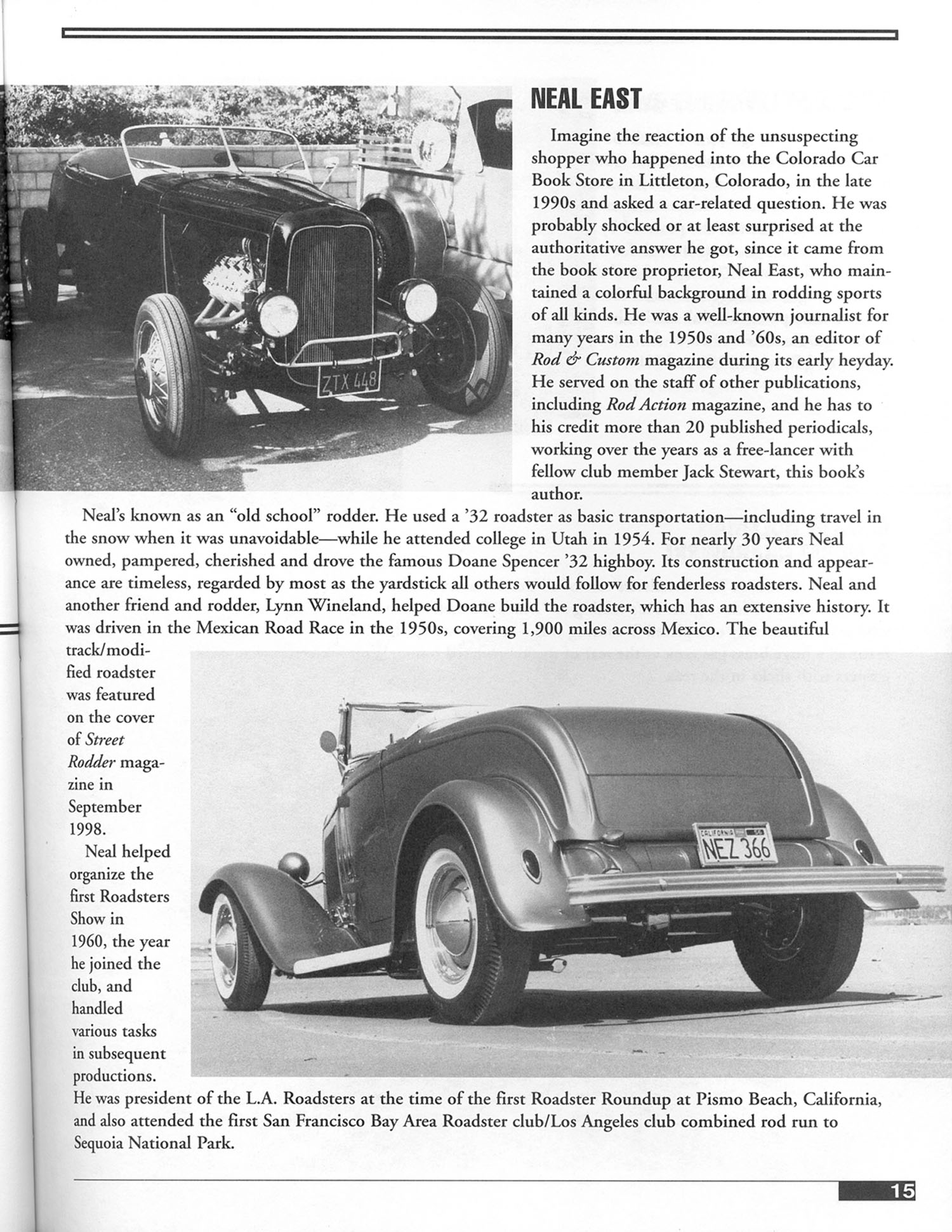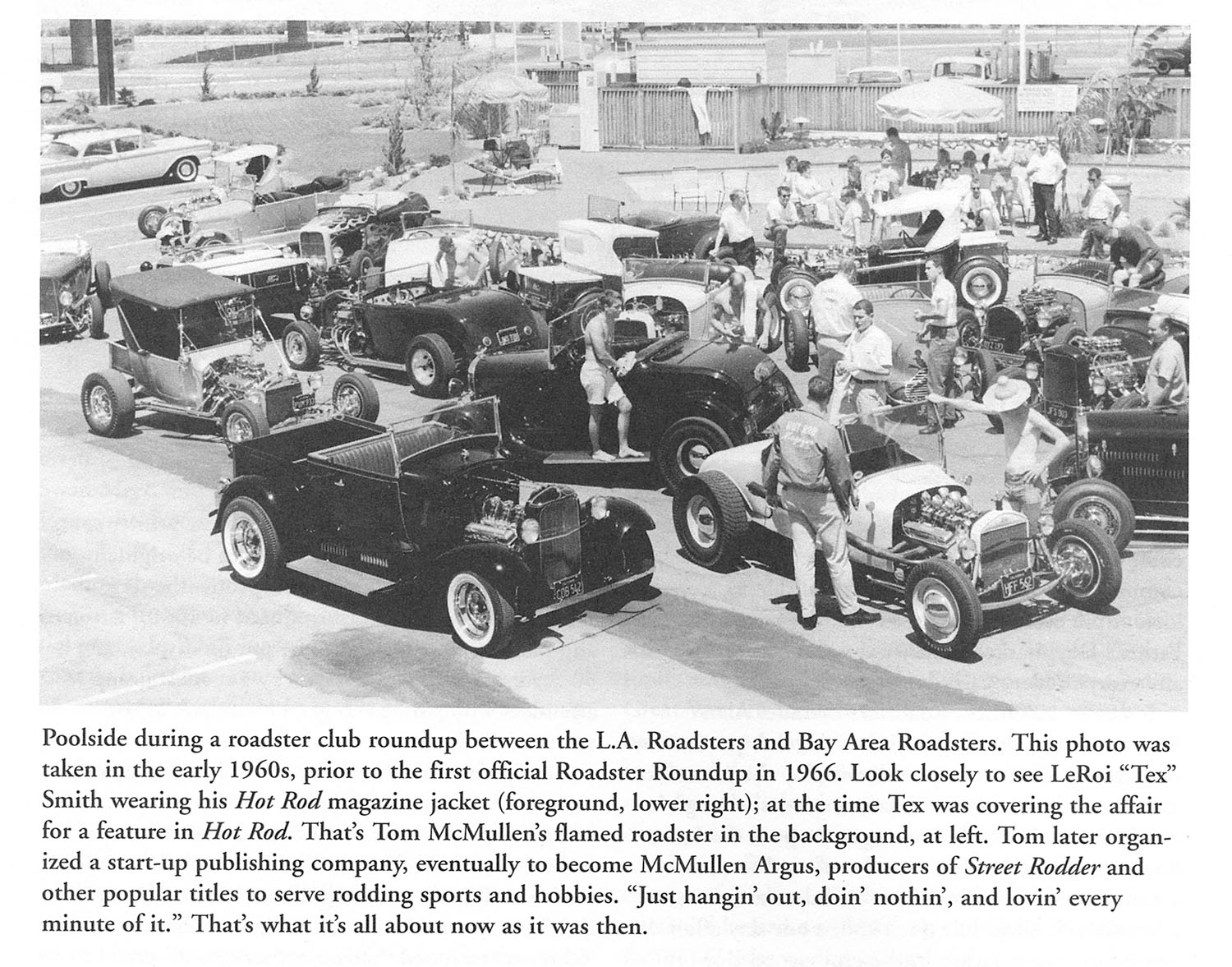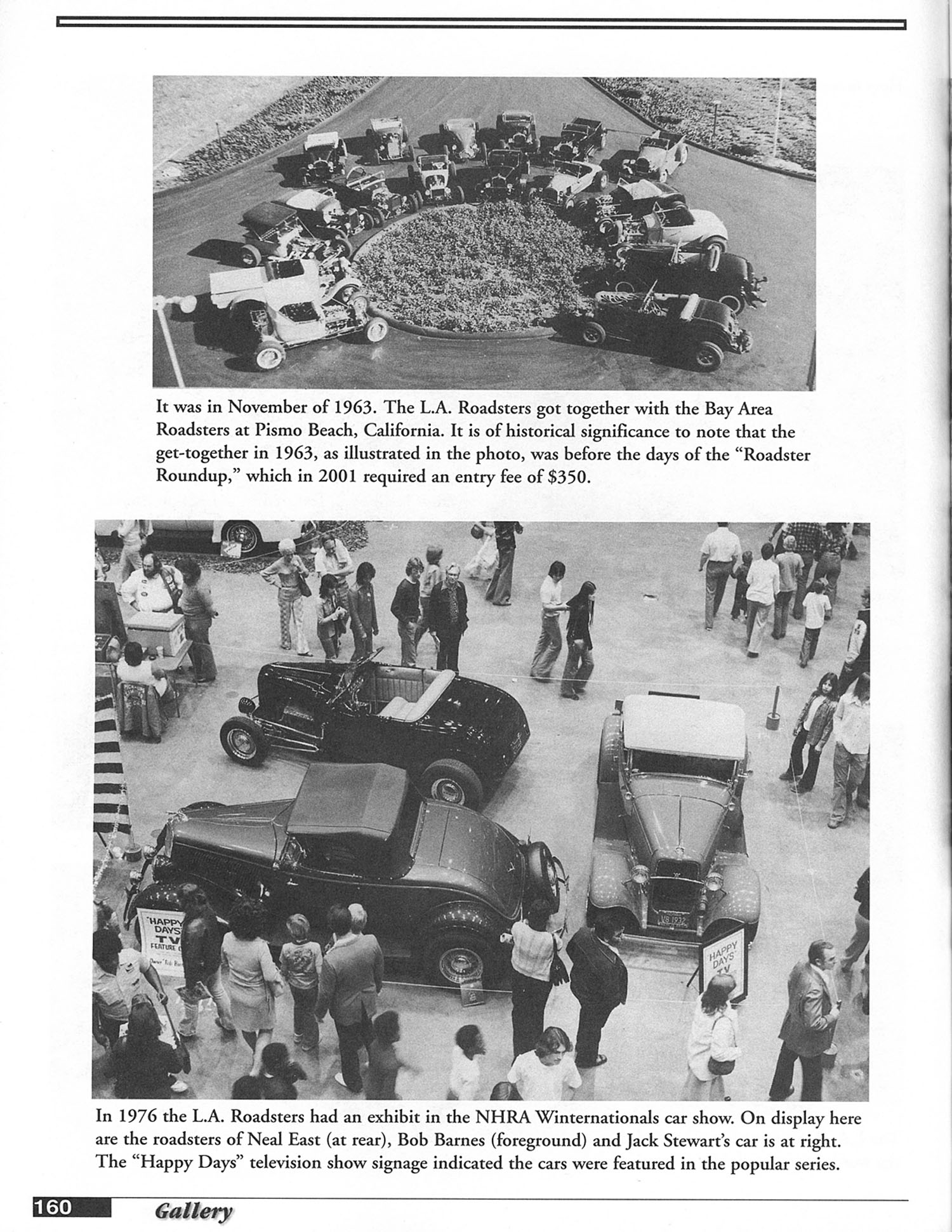“L.A. Roadsters, A Retrospective” By Dick Wells and Jack Stewart
Submitted by Admin on

Book Review by Richard Parks, Photographic Consultant Roger Rohrdanz


Dick Wells and Jack Stewart of the L.A. Roadster Club have written a book, “L.A. Roadsters, A Retrospective,” that will thrill the hearts of roadster lovers everywhere. There are 381 photos of every conceivable kind of roadster style, body and design. Well written and highly informative biographies of club members, car builders and famous celebrities are found throughout the book. A short history of the club offers an insight into the hot rodding scene of the golden era of hot rodding in the 1950’s. The book runs to 182 pages in a soft cover format that looks terrific on one’s coffee table in the living room or den. The graphics are excellent with a stylish cherry red ’32 roadster on a white background cover. I didn’t mind that the book wasn’t in a hardcover format. There are six well-written introductions to the book by well-known and respected members of the hot rodding era. An introduction sets the stage for a book and yet they are hardly ever read. But with Dick Wells, Wally Parks, Tom Medley, Robert E. “Pete” Petersen and Ken Gross adding their thoughts to the book, that was the first place that I looked.
The cars were the second place. One drawback was the lack of an index. This book was meant for the autograph seeker, but lacking an index makes it harder to locate people. This didn’t stop me from getting Linda Vaughan’s signature and a hug (she’s on page 178). Wally Parks (page v), Dick Wells (page iv), and Jack Stewart (page iii) soon gave me their autographs and I was really into the swing of collecting. Plan on taking your copy to the next L.A. Roadster show on Father’s Day 2003 and track down the members and their fascinating cars.
The biographies were just right. They touched on the highpoints of their lives, but didn’t dwell on the meaningless. Most hot rodders want lots of pictures and a few lines of text to put the cars into some perspective. This book has the feel of a “Hot Rodders Journal” written by a hot rodder. For the newcomer to hot rodding, this book almost has the feel of an encyclopedia, and I learned a great deal about a lot of people and cars that I had seen before, but truly didn’t know much about. This isn’t a bookcase type of book. It isn’t meant to be “owned,” but to be read, dog-eared, shared with friends while bench racing and thoroughly written upon. Jot down special stories next to the car that you remember, phone and email numbers, autographs and bon mots. It’s just like the high school album that we passed around when we were young at heart.
I counted all 381 roadsters shown in this book. Front, side and rear angles were mingled with close-ups of the engine compartments and interiors. The black and white photos gave the book a very nostalgic look to it. I didn’t mind that the only color photo was on the cover. Most photos of the era were in black and white, and color photos would have distracted from the visual feel of it all. Though the L.A. Roadster Club designated a time span in the early and mid 1930’s as the era of the classic roadster look, you won’t find a standard body in this book. Genius inspired the creations that you will see included here. Classic cars with fenders and no modifications, to out of this world T-buckets fit for the “Munsters,” are found throughout the work. Check out Rick Stees “doghouse” wood camper shell, and Don Kendall’s low slung dragster style roadster for the rebel in all of us. For the classic roadster look, check out Pete Van Iderstine's 1932 Ford and Dick Page’s 1932 black deuce highboy Ford, with red interior and chopped windshield.
Whenever it seems that conformity is about to take hold, a new breed steps forward to expand the norms. Check out Russ Klindworth’s 1928 roadster pick-up truck with a Chevy engine and three two-barrel carburetors. Some of these are famous, including Norm Grabowski’s “77 Sunset Strip” Model T driven by Edd “Kookie” Burns. The preferred 1930’s look gives way to far older cars such as Martin Hoffman’s pre-flapper 1915 T-bucket roadster with a quad-carbureted Olds engine. Add some raccoon tails and furry coats and this car is the cat’s meow. The photo of Arnold’s diner from “Happy Days” brought back lots of old memories.
Tom McMullen popping his chute as a policeman pulls him over is a classic shot. Though it was staged by a friend, this picture brings out the pathos of the times when hot rodders were considered hooligans at best and the police as being intolerant. Today the hot rodder has earned his proper place in society as a true craftsman, designer and artist. Many policemen now have joined the hot rodding ranks and no longer stop a hot rodder for cosmetic defects on the car. There were four or five old nostalgic photos showing past sites of the L.A. Roadster show. There could have been more, to show the evolution of this club and the growth of the L.A. Roadster show. There is enough material to bring out a second book on this subject, and perhaps add more nostalgic photos and an index. This is a must have book for the sincere “roadster fanatic,” one to read and reread. The quality of the photos and the writing of the text show a professional hand behind its creation.
From the Book



This book can be purchased from Jack Stewart at the 43rd LA Roadster Show June 16 & 17, 2007 at the LA Fairplex in Pomona.
